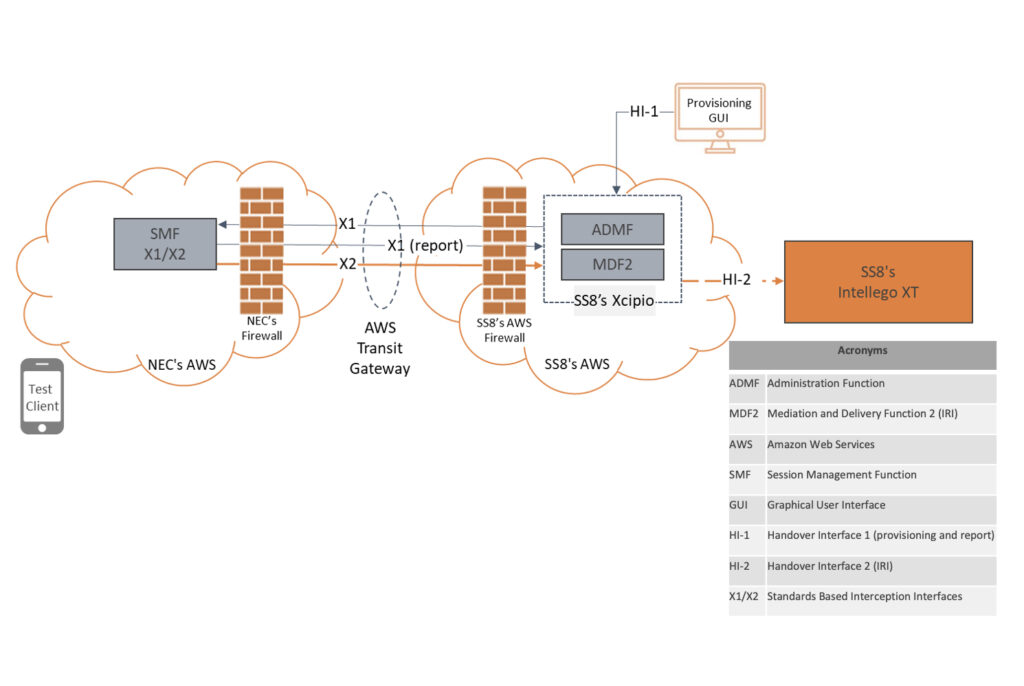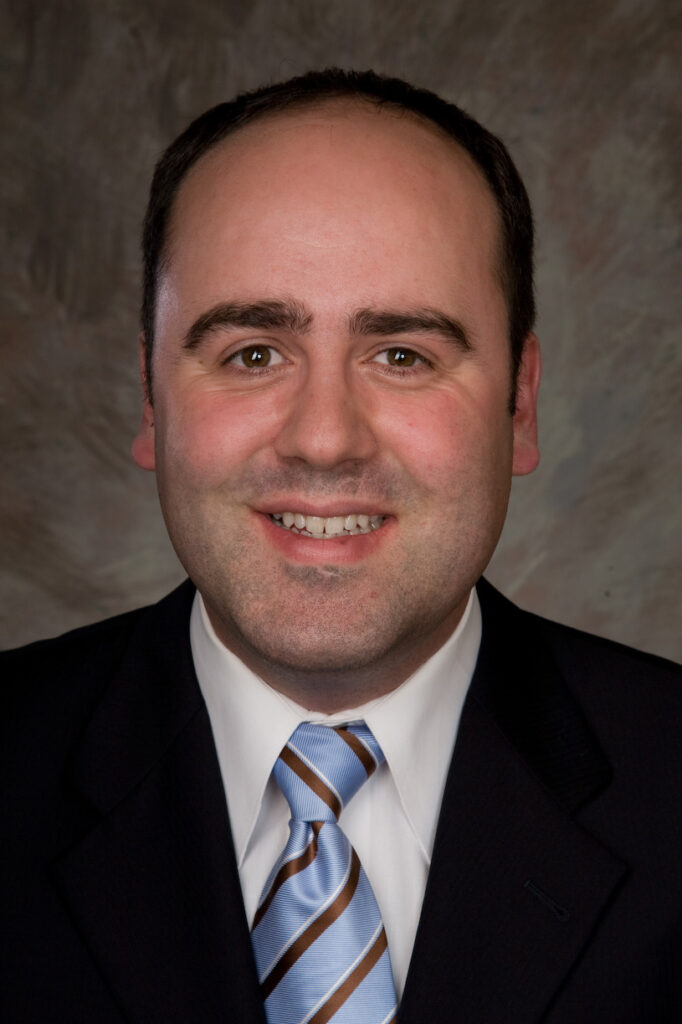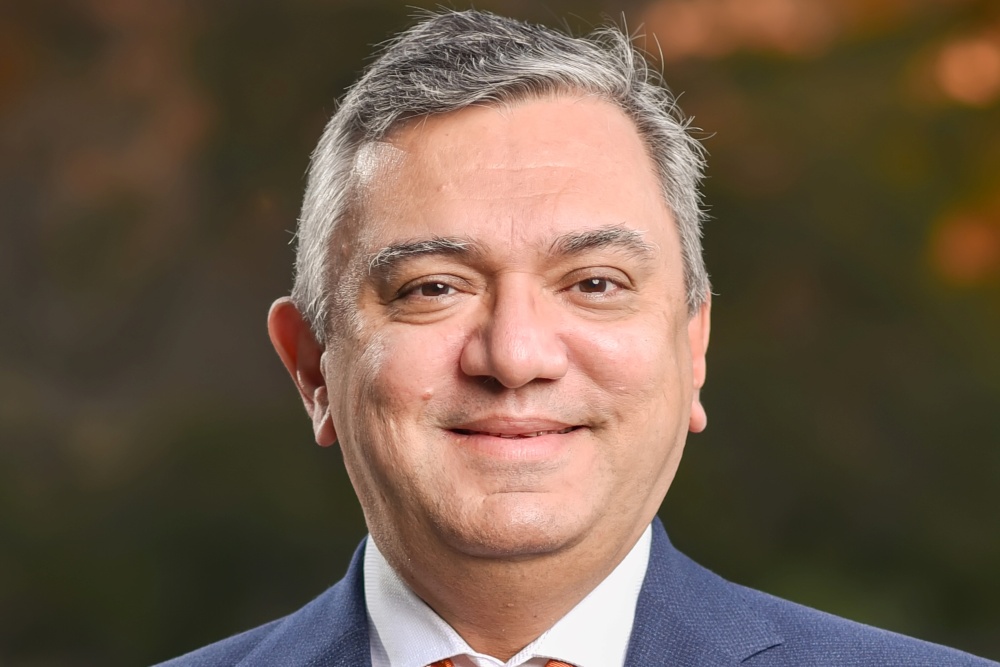Sponsored: Secure provisioning, monitoring, mediation, and handover of lawfully intercepted data have long been critical considerations for operators.
They are key considerations for communication service providers (CSPs) in the design and buildout of public networks. Full interoperability with lawful intelligence solutions allows law enforcement agencies (LEAs), government entities, and emergency responders to protect citizens. In a world of increasingly distributed, encrypted networks shaped by cloud and 5G infrastructures, those considerations have become more complex.
To meet these evolving needs, SS8 and NEC, a leader in the integration of network technologies, have now completed interoperability testing of their products. As part of SS8’s Acceler8 partner program, the ongoing engagement between the two companies has demonstrated long-distance compatibility between SS8’s Xcipio mediation platform and NEC’s Session Management Function (SMF), a 5G control-plane element. Validating this capability provides functional and regulatory assurances to CSPs as they set roadmaps to implement next-generation network infrastructure.
Going beyond standards
As 5G networks proliferate and cloud-native based infrastructure that complies with regulatory structures like 3GPP and ETSI replaces the proprietary equipment of previous generations, a new wave of telecom infrastructure technology vendors are emerging. While international standards establish a baseline for interoperability among 5G network elements (including lawful intercept) from different vendors, those measures do not guarantee compatibility.
Every provider exercises some degree of interpretation in applying 3GPP, ETSI, and other standards. Accordingly, any combination of technologies from different companies must be thoroughly tested to verify performance, security, and usability. Through its Acceler8 program, SS8, therefore, pushes the interoperability of its platform with network functions and elements developed by various companies all over the world.
This validation provides assurances to CSPs that implementations will be executed smoothly and avoid unforeseen engineering issues that could delay projects and expand costs. The rigorous review of network elements; code and structure can also reveal previously unknown bugs or glitches, increasing their overall quality. SS8’s more than two decades of leadership in developing lawful intelligence platforms aligns the function with the broader network ecosystem across interfaces, formats, and protocols.
SS8 and NEC Test Architecture
For the validation test, NEC’s SMF in Japan and the SS8 platform in California were interconnected by Amazon Web Services (AWS) infrastructure-as-a-service, as shown in the schematic below. The successful operation of the X1 provisioning interface and X2 signaling transmission interface demonstrate international connectivity and functional compliance between SS8’s Xcipio and NEC’s Converged Core, providing a proof of concept for lawful intelligence in the increasingly borderless world of communications.

Provisioning SS8’s Xcipio for interception from NEC’s SMF, located on the other side of the world, offers the companies’ shared customers elasticity on-demand, eliminating the need to maintain idle system headroom for usage peaks. Extending network infrastructures using public cloud resources rather than dedicated, localized hardware also allows network functions to be spun up when and where they are needed most in a ‘follow-the-sun’ model that optimizes network processing for the busiest times of day by region.
The seamless interoperation of SS8’s and NEC’s products across the Pacific demonstrates the opportunity for CSPs to geographically decouple lawful intelligence mechanisms from the network functions they must connect to. It allows for the efficient development of global services without the deployment of engineering staff to distant locations, while maintaining regulatory compliance and ensuring LEAs can obtain the evidence they need to advance investigations.
At the same time, it protects privacy by encrypting communications data with the latest Transport Layer Security (TLS) standards and enforcing robust warrant management protocols to ensure that information handover follows legal requirements.
Conclusion
As CSPs seek greater economies of scale, mainly through mergers and acquisitions, larger, often international service areas are becoming prevalent. To the extent allowed by legal and other considerations, technology is, therefore, most efficient when it can operate freely across geographies, allowing CSPs to realize significant cost savings – particularly within regions with a common jurisdictional fabric, such as the EU.
The distributed nature of 5G networks enables this efficiency by moving network functions to the physical location where they will be used at the appropriate time. Because it is no longer necessary to backhaul all data to a central point, CSPs can dynamically provision resources to physical locations that reduce the bandwidth required to move data around the network. They can also reduce latency to improve service quality and enable real-time and near-real-time usages, capitalizing on the growing market for services related to the internet of things (IoT).
Strategic planning of network infrastructure sets the stage for CSPs to take advantage of emerging opportunities afforded by distributed, international networks. Aligning these network roadmaps with interoperable SS8 and NEC platforms provides CSPs with an efficient, end-to-end, carrier-grade 5G network supported by leading lawful intercept solutions that ensure compliance while capturing the actionable intelligence needed to protect society.
About the authors

Patrick Lopez is global VP of product management for 5G products at NEC, where he supports the product strategy and planning, partnership,and growth of the Open RAN, 5G Core and 5G monetization services. He has over 20 years’ experience building, launching and operating telecoms businesses in startups, mid-sized and tier one multinationals. Prior to NEC, he was global VP of networks innovation at Telefonica groupand CEO at {Core Analysis}, the leading industry analyst practice at the intersection of telco and cloud. He holds a MBA in Corporate Management.

Franklin Recio has been with SS8 since the foundation of the company. He has been involved in multiple roles including project management, services, sales, and product development, etc. Currently, he’s in charge of Global Field Services implementation and the Acceler8 Alliances program to expand the relationships with other members of the ecosystem. Franklin has an engineering bachelor’s degree in Electronic Communications and a master’s degree in Upper Management and International Development. Currently, he’s pursuing a Ph.D. in Strategic Analysis and Sustainable Development at the Anahuac-Mayab University in Mexico. You can learn more about Franklin on his LinkedIn profile here.
About NEC Corporation
NEC Corporation has established itself as a leader in the integration of IT and network technologies while promoting the brand statement of “Orchestrating a brighter world.” NEC enables businesses and communities to adapt to rapid changes taking place in both society and the market as it provides for the social values of safety, security, fairness and efficiency to promote a more sustainable world where everyone has the chance to reach their full potential. For more information, visit NEC at https://www.nec.com or follow them on Facebook, LinkedIn, Twitter, or YouTube.
About SS8 Networks
SS8, a network intelligence company, provides solutions to help customers quickly identify, track, and investigate devices and subjects of interest. SS8 is trusted by six of the largest intelligence agencies, eight of the fourteen largest communications providers and five of the largest systems integrators. For more information, visit www.SS8.com or follow us on Twitter @SS8 or LinkedIn.



